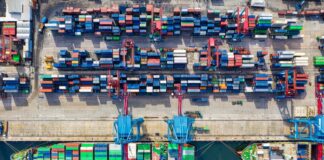The IEA’s 661 page bible on global energy is out. What are the in-depth signals business should note?
By any estimates, the release of the International Energy Agency’s World Energy Outlook is a key moment in the energy year.
It’s at this point we receive inputs and analysis on low carbon progress, percentages of coal or gas powering our world, and glimpses into the future of climate change.
Business Green reports that renewables and coal will essentially swap places in the generation mix by 2040 according to the IEA, with the share of coal forecast to fall from 40 per cent today to just a quarter by 2040.
In contrast, renewables are set to grow from a 25 per cent share today to 40 per cent by 2040. You might think this is superb news, but there is a catch.
According to the IEA, energy-related carbon emissions will continue to grow, with the march towards green power not happening nearly fast enough to avert dangerous warming.
Carbon emissions from energy are set to rise 10 per cent to 36 gigatonnes in 2040, mostly driven by growth in oil and gas use.
Meanwhile, although wind and solar generation are set to grow at a fast clip, other low-carbon technologies, particularly progress on energy efficiency, won’t reach their full potential without a “big push” from governments, the IEA said.
In other words, government drivers such as carbon legislation and mandatory energy reporting schemes are crucial if we are to sustainably marry energy, business and planet.
Positivity on the roads
Business Green notes that oil consumption for cars will hit a peak within the next seven years according to the IEA, as vehicles become more efficient, and falling costs and lengthening ranges propel significant growth in electric car use.
Sales of EVs will rise by 30 per cent every year for the next five years under its base scenario, leading to 300 million electric cars being on the road by 2040.
This is encouraging. Whilst such vehicles have big impacts in terms of load, they also have a key role to play in balancing UK power, and the hastening development of renewables which many businesses are keen to see.
Time is running out
Existing energy infrastructure takes up 95 per cent of the world’s carbon budget before anything else is even built, the IEA’s executive director Fatih Birol told the Guardian ahead of the report’s release.
“We are eating up 95 per cent of the [carbon] budget, even if we don’t do anything else. Which of course is impossible, not building any more trucks or power plants,” Birol warned.
The Guardian says that to limit temperature rises to 2C, let alone the 1.5C scientists recommend, either all new energy projects would have to be low carbon, which is unlikely, or existing infrastructure would need to be cleaned up.
There is more. Overall, the world’s appetite for energy is expected to grow by a quarter by 2040 because of an extra 1.7 billion people, growing affluence and a shift in demand from the west to Asia.
In conclusion
As ever, the IEA document makes for a heady mix of positivity and worry. On balance the top level notes strike a chord of concern. Progress just isn’t up to pace on global warming and fundamental change is still much too slow.
Yet coal is on the way out and signs of a new low carbon, sustainable economy are there. Whilst this is an imperfect prediction, it’s fair to say the world, and the UK, has seen the light on sustainable energy.













